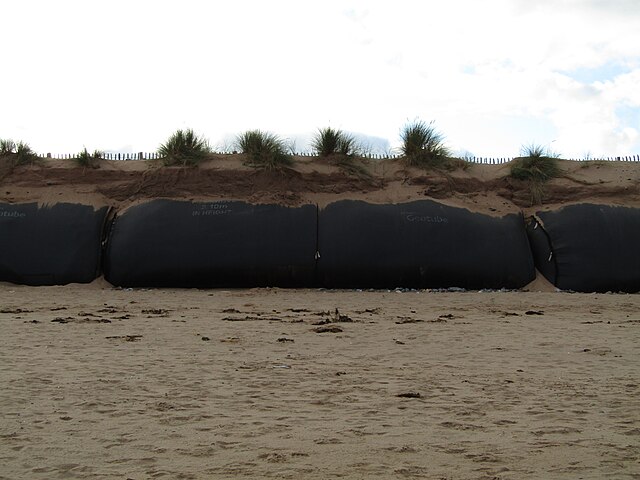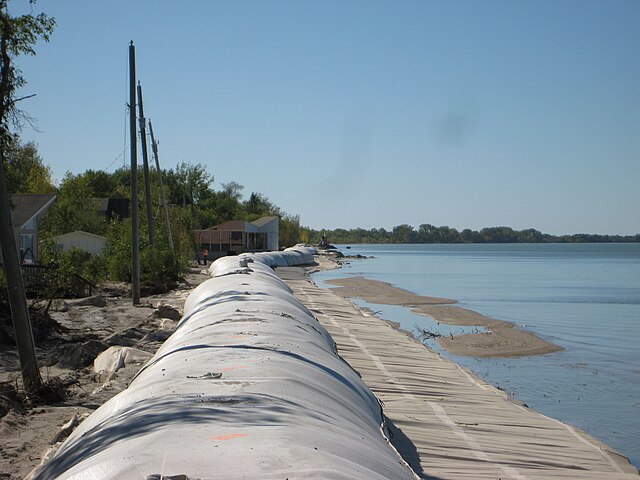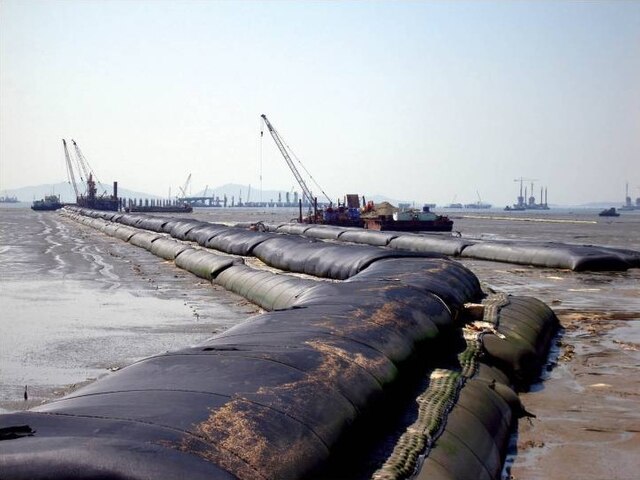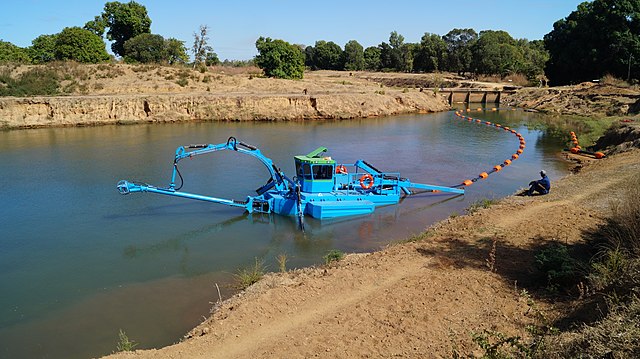Top Qs
Timeline
Chat
Perspective
Geotextile tube
From Wikipedia, the free encyclopedia
Remove ads
A geotextile tube is a large, tube-shaped bag made of porous, weather-resistant geotextile and filled with a sand slurry, to form an artificial coastal structure such as a breakwaters, dune or levee. Geotextile tubes are a component of the living shorelines approach to coastal management. They are aligned with the shoreline to weaken wave energy and protect against coastal erosion. The tubes facilitate oyster reef development and create areas to dispose of new dredge material.[1] Geotextile tubes are also installed for land reclamation and temporarily installed during the dewatering phase of a dredging operation.




If a geotextile tube is exposed to the elements, it can be vulnerable to bursting.[2]
Remove ads
Notable installations
This section needs expansion. You can help by adding to it. (September 2021) |
- Grand Isle, Louisiana ("Burrito Levee")
See also
Wikimedia Commons has media related to Geotextile tubes.
References
Wikiwand - on
Seamless Wikipedia browsing. On steroids.
Remove ads
